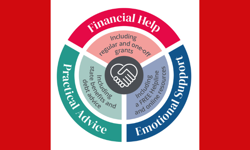As someone who has been advising news organisations for nearly 20 years, presenting my arguments around the world, and of course writing for people like you, I never cease to be amazed by the things that people respond to and those they ignore.
So it was interesting that my most recent rant about the value or not of the social networks in the market and to news publishing drew a lot of comment. To reprise:
Media product life-cycles are shortening, with newspapers being 400 years old, analogue broadcast and telephony around 150, digital media less than 20, and many key digital players showing value fatigue. Facebook will be next. In fact the consumption of broadcast news has been declining far faster than print for 20 years. Business school aficionados out there will be conversant with what is called the Boston Matrix, a concept where companies recycle cash from their most profitable sectors. For various reasons, with some very notable exceptions, publishers have failed to adopt this simple business concept.
In addition, news media are diluting their brand values by clutching to social media; it’s a life raft with a hole in it. They need to restore confidence in their print products and establish loyalty in their digital services. This is simply not happening.
As a further reprise (and I apologise if am again recounting previous material, but I’ll get to the point in about 37,479 words time), consider these facts:
When you compare the intensity of news media consumption between analogue (print) and digital media, the geometric effect of times visited and activity – what I call intensity – suggests that analogue consumers absorb over fifteen times as much stuff as those visiting websites.
Visits per consumer (Analogue: 15; Digital: 8.6)
Minutes per visit (Analogue: 25; Digital: 4.1)
Pages per visit (Analogue: 30; Digital: 11.4)
Unique visitors % of readers (Analogue: 100; Digital: 30)
Impact based on pages (Analogue: 45000; Digital: 2941)
This confirms another of my regular themes, namely a common misconception that web-usage is somehow destroying print readership, but the reality is that the behaviour of consumption is completely different. Examine your own behaviour. I bet you spend time with your printed media, but flick through your digital options, probably several times a day.
In addition, and this is the subject of a separate study I am currently working on, the nature of the online experience precludes the visitor from fully navigating either the page they are visiting or the wider content of the site. This is newspapers’ biggest challenge, and is the conundrum that is driving down digital revenues, and prohibiting pay-wall models.
In addition, the attachment to partners, such as Facebook or the invidious Apple newsstand are horrifically damaging not only publishers’ ability to get to know their readers, but even more damaging, they are destroying any opportunity to introduce the right advertisers to the right prospects.
If you assume that publishers currently get a rate of one revenue unit for page impression, and perhaps 10 for a click-through, my analysis of data from real life projects with publishers and advertisers is that these figures can be accelerated to 100, providing publishers protect their customer knowledge and work with their advertisers in terms of ad serving. The facts are that a typical click through rate is less than one in a thousand page impressions, and an active response is likely to be between 10 and 50 per million page impressions.
What frustrates me is that this is not rocket science. It simply requires publishers to appoint someone to track, analyse and report on their website analytics, and set goals to improve the geometric intensity of their website. We’re talking lower school math here.
Real Time Bidding in social media is showing how user data can be used to generate higher margin for given inventory. Publishers have an even stronger proposition to make here as they have deeper, wider and better quality content to offer the subscriber, in return for more granular user insight. And that is what advertisers want. Algorithms are now emerging to manage this problem that exploit publishers’ unique relationship with their readers and advertisers, rather than the vanilla based approach of Google and DoubleClick.
OK so the matching of newspaper user data with advertisers’ customer data is more complex, both in terms of data, and also in terms of navigating data protection, but trust me, this work is not only going to become very profitable for publishers and advertisers, but it should overcome our industry’s biggest conundrum.
If you are interested in participating in either of these projects email me. There is no cost, no hard sell, since they are both research based. At some point in the future, we will produce a report on our findings and recommendation for the industry worldwide.
Simply email me at jim@jimchisholm.net saying in the email subject:
Conundrum – participant or observer
Partnership – participant or observer
And as always any other ideas, criticisms, cheques (?), would be very welcome.










